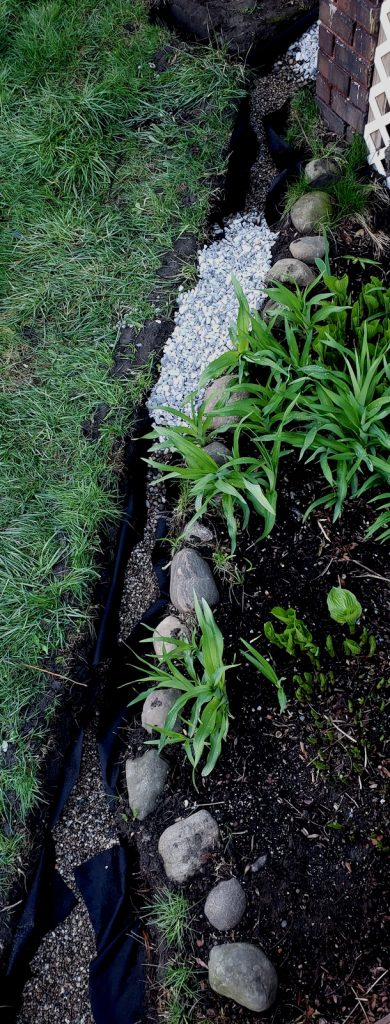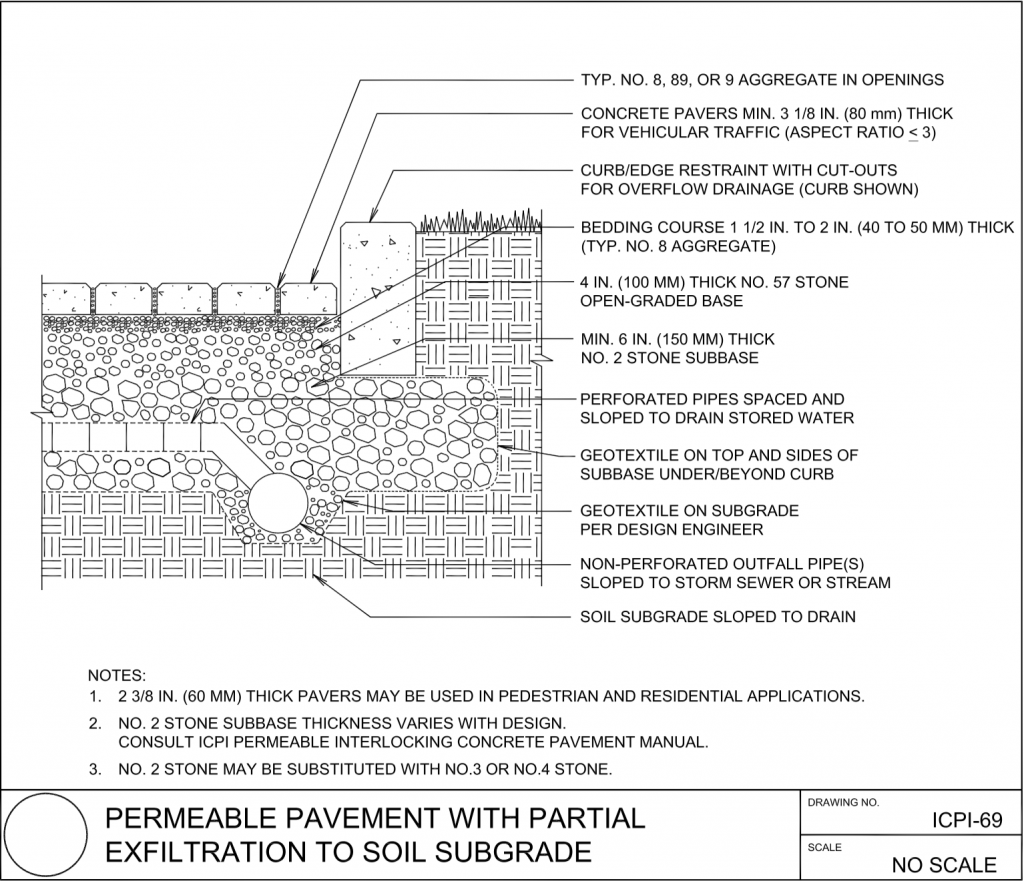April Showers Bring May Combined Sewer Overflows
I woke up several times last night to the sound of torrential rain drumming on the roof. The attic roof provides pretty good sound insulation, with about four inches of foam and what will eventually be a few more inches of blown cellulose insulation. 47 mils of rain overnight in some areas and more than 60 in others (over two inches). I just completed a sort of not-quite French drain– a Belgian drain, let’s say- in the front yard to channel water away from the house. It worked, sort of– but it wasn’t meant to handle as much rain as we got, so there remains some standing water in the basement. Our house– 3,000 square feet with a huge and annoyingly hardscaped back yard- also gets dumped on from the massive duplex to the north, so I’m frankly surprised that it isn’t worse.
This homeowner stuff is what I’m working on in my offtime, and it’s thus far limited to digging trenches, lining them with geotex, and filling them with a variety of pebbles. It’s experimental and it’s cheap. But, ideally, I can demonstrate at some point the viability of doing this stuff at a larger scale as a matter of reducing strain on our stormwater infrastructure. Hopefully, this will be a way to rethink our approach to nature in building cities– we should be focusing on how to contend with and work with nature rather than on conquering it with technology and machines.

While I was working on scattered-site residential redevelopment in Detroit, we ran into frequent problems of basements flooding. The response of the Powers That Be was to provide some perfunctory attention to site grading– that which one could pay a vagrant to do in an afternoon, so, really not very involved. My proposal– summarily rejected, as was often the outcome of such cases as Young Whippersnapper v. Banker- was to develop a structure for financing green stormwater improvements and incorporate this into the project financing.
The math was pretty basic: I figured that there was a probability of 1 in 10 that the basement would flood to the point of doing substantial damage, any time between installing finishes and actually turning over the keys to the buyer. If a furnace was damaged– which it usually would be, since most furnaces in these homes sat on the basement floor (which is, incidentally, another idiotic planning idea in an area that floods frequently)- this could represent thousands of dollars of damages, because HVAC techs. If you amortize the cost of a few instances of flooding over the life of a loan, you quickly account for tens of thousands of dollars of damages that should justify thousands of dollars of expenditure in superior site infrastructure to manage stormwater.
But the bankers and the managers did not agree. These were quick-and-dirty fix-and-flips! “Get these freaking houses done, I’m not interested in your organic sunshine tubes,” my director told me.
Nor did the idea go over particularly well with the contractors.
“Oh, that California stuff?” one amused, but charitable, contractor asked. “Boy, you been watchin’ too much tee-vee!”
Jimmie and I sat down to work out the numbers and figured out that it would be not only expensive but also technically challenging to achieve pervious paving on such tight lots. You can’t excavate a narrow driveway on a small residential lot straight down 19-24″ (48-61cm) to provide the absorptive aggregate layers for pervious paving, so you’d have to slope the whole mess, meaning that you’d substantially reduce the rainwater volume. It’d likely be enough volume, but the takeaway is that you lose an economy of scale, and, in a renovation budget that tops out at $75,000 or $100,000, spending $25,000 on a driveway isn’t exactly what the bosses like to see (nor does it come out in the wash unless you’re directly subsidizing that cost). Gravel is also, really, really expensive when you’re using that much of it.
The more “proper” you want to do it– see below for what I think is a system somewhat overengineered (or perhaps simply unnecessarily technical) for our climate- the more expensive it is. And then prohibitive, given that you usually can’t just cop extra financing for this stuff.

Socioeconomic Effects of Ailing Infrastructure
As I often point out when standing on a soapbox about these issues, my basement filling up with a couple of drops of water isn’t a big deal– in my worst case scenario, I could rack up a few grand on a credit card to pay someone to do an emergency boiler replacement or some cleanup. Lower-income homeowners probably don’t have that option, and renters are, for the most part, shit out of luck entirely. A colleague of mine in Legal Aid says that the problem of sewage backup in Detroit’s rental homes is so ubiquitous– in no small part the fault of ailing, old combined sewers not built to handle sewage mixed with massive amounts of stormwater- that judges in eviction cases almost universally refuse to honor rental escrow in these cases. In other words, so many basements are filled with raw sewage that if a judge honored one escrow case, they’d have to honor all of them, and landlords would simply stop making money, and justice wouldn’t be served. (God forbid, right? Happy freakin’ May Day, people!)
Given no incentive, no one expects Bloomfield Hills-based slumlords on the west side of Detroit to incorporate GSI into their rental properties. A much lower-hanging fruit than what I’d call “intensive” GSI would be to provide superior site drainage that can incorporate stormwater retention or, better yet, to incorporate GSI into public rights-of-way, as has been done in Detroit perhaps once. An old story, but one that can still be told– in the hopes that maybe we can do it again. There is evidence that this is not only good for infrastructure, saving beaucoup bucks for cash-strapped municipal governments, and makes things prettier– but also makes communities safer.
As the incidence of intense storms increases and we are increasingly woken up in the wee small hours by the dulcet tones of the Emergency Alert System, it would behoove us to ask tougher questions about how we can affordably improve the properties we own– and the public rights-of-way that belong to all of us, in a way that will help mitigate disaster.


